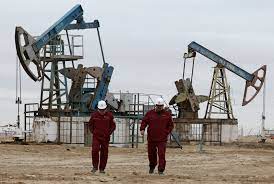Oil rises more than the 2% on Friday, and it does not seem to be lowering down. There are expectations for the oil to rise for at least another week. The sanctions on Russian oil give the world a perspective of a tighter supply, which can mean higher prices.
For instance, we have Brent futures rose $2.36, or 2.1%, to $113.22 per barrel by 12:18 a.m. ET (1618 GMT), while U.S. West Texas Intermediate (WTI) crude climbed $2.46, or 2.3%, to $110.72 a barrel.
“In the near term, the fundamentals for oil are bullish, and it is only fears of an economic slowdown in the future that is holding us back,” said Phil Flynn, an analyst at Price Futures Group
The production by the OPEC+
After the harshest sanction of embargo applied by the EU to Russia this week, WTI was on the way to gaining 6%. Also, Brent is set to rise about 4% the same week.
The EU’s sanctions include phasing out imports of refined Russian products by the end of 2022. Another one, for instance, is banning all shipping and insurance services for transporting Russian oil.
The EU is now modifying the sanctions, and they need the approval of the 27 countries in the bloc. This is the latest attempt to win over all countries that are still reluctant.
“The looming EU embargo on Russian oil has the makings of an acute supply squeeze. In any case, OPEC+ is in no mood to help out, even as rallying energy prices spur harmful inflation levels,” PVM analyst Stephen Brennock said.
You also might want to read “Swiss preparing for possible ‘severe’ electricity and gas shortages“
They were completely ignoring the calls from Western nations, requesting to hike output more. On the other hand, the Organization of the Petroleum Exporting Countries, Russia, and other allied producers (OPEP+) stuck to their plan. They would like to keep raising its June output target by 432,000 barrels per day.
However, the concerns rise if we listen to the analysts’ experts’ opinions saying the OPEC+ actual production rise to be smaller. It can be the case due to the capacity constraints.


